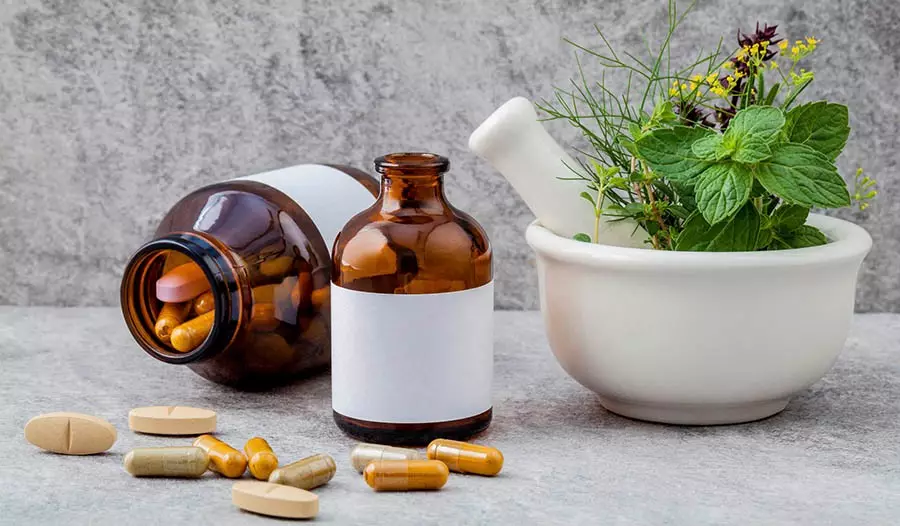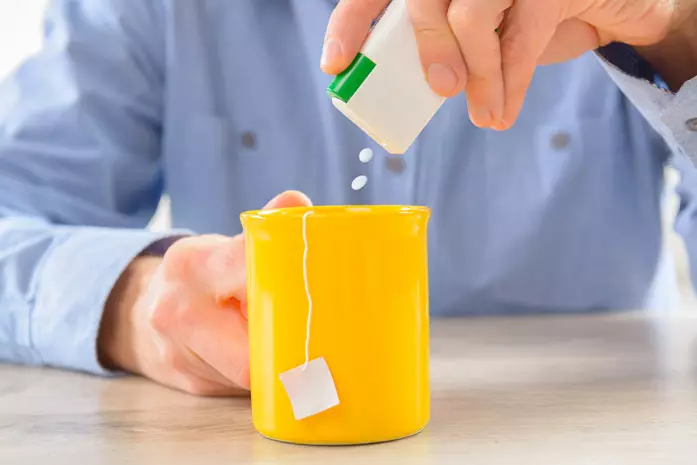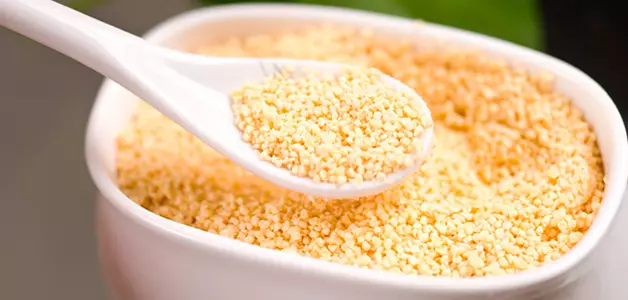
Methods of conservation of food exist from ancient times. From fermentation to salts - our ancestors used all the ways to preserve taste and increasing the storage period for their food. However, over time, the desire to preserve the color, taste and "shelf life" of food only increased. Therefore, dozens of food additives and preservatives were created for meat, butter, bread and many other products.
Obviously, the benefits of a set of food additives, to put it mildly, is doubtful. And some additives that are considered safe in the United States are prohibited in other countries.However, with an increase in the number of such substances, there was more and more in the root of incorrect ideas about the effect of food additives and preservatives on the human body. However, it is immediately worth a reservation that large doses of some substances from the following list may cause serious damage.
1. Aspartame

If someone uses non-sugar products, it can be argued that it used aspartame, which is 200 times sweeter than sugar. It is because of such sweets that a smaller amount of this additive is required, which ultimately means a smaller amount of calories. Given the presence of aspartam in puddings, dietary soda, candy, ice cream and many other snacks, no one is surprised, having heard the statements that its use can lead to diabetes, attention deficit syndrome, depression and even cancer. To find out whether these statements are true, researchers checked aspartames in the laboratory, including people.
When the studies were carried out on rats, the researchers concluded that large doses of aspartam did not cause any health problems in animals. When the experiments were carried out on humans, at least, it can be argued that aspartames are not connected with cancer. With regard to whether some people can have sensitivity to Aspartum, it was also refuted by recent research. Today there is no doubt that even a small overdose aspartam cannot cause serious health problems. Nevertheless, research continues.
2. Sakharin
Sakharin is another dietary supplement used to sweeten food. Like aspartum, this product is much sweeter than sugar (300 times), and thus, it is necessary for the sweetener of food, which leads to a smaller calorie. Nevertheless, Sakharin received a huge share of criticism for the fact that he allegedly is a carcinogen. In the 1970s, one study showed Sakharin's bond with a bladder cancer in laboratory rats. Although this discovery was quite frightening, soon stated that the occurrence of urinary bubble tumors in rats has no attitude towards people. Now Sakharin is considered safe for consumption by a majority of medical organizations around the world.3. Calcium propionate

The presence of calcium propionate in the composition of ordinary bread will make anyone think. But, in fact, this substance is considered quite safe. This additive is used as a preservative in bread to prevent the appearance of mold and microorganisms. This means that the bread will be stored longer. In one study, rats fed this preservative during the year, after which no negative features were revealed. Naturally, calcium propionate is approved by a sanitary surveillance with food quality and medicines (FDA) and even used in homemade baking.
4. Tartrazine (Yellow No. 5)
Sweeteners are not the only nutritional supplements that a flurry of critics collapsed because they allegedly potentially cause all sorts of diseases. Dyes got no less than. In fact, some dyes that are used in everyday food in the United States are prohibited in many other countries. One of these dyes is Tartrazine (Yellow No. 5). He was accused of allergies, behavior disorders, insomnia, hyperactivity and cancer. Despite the fact that there are many statements about the potential danger of "Yellow No. 5", many studies have abused errors. As for allergies to this dye, the FDA tried to solve this problem, demanding to indicate the tartrosine in the list of food ingredients. The agency also declares that allergic reactions to the addition of extremely rare, and the cases of asthma were not observed at all.5. Erythrosin (Red No. 3)
Everyone uses a little erythroin, giving a cherry or jam. But you should not worry, because it is not as bad as everyone thinks. Erithosin, usually known as "Red No. 3", is a beautiful red dye that gives products a bright shade. Nevertheless, many are worried about the assertions that erythrosine can affect the pituitary gland and negatively affect the production of spermatozoa. Despite the fact that these statements are very discouraged, FDA declares that "Red No. 3" is safe. After testing, the supplement was concluded that erythrosine does not adversely affect the health of people or animals. However, there is the maximum allowable dose of this additive.
6.Seva lecithin

Soy lecithin is balanced on the verge of security for many years. However, in contrast to most other additives, it is not associated with the possibility of dangerous diseases. Soy lecithin is a dietary supplement that is used as an emulsifier, antioxidant and flavoring. Many argue that this substance can lead to allergies (because of soybean from which it is produced). It is also a genetically modified product, to produce toxic chemicals. Although it may be a problem, it is easy to avoid, just buying products that use organic soy lecithin. But if someone has allergies to soy, it is better to completely avoid even organic soy lecithin.
7. Nitrite sodium
Sodium nitrite is a preservative used for meat storage. Although due to this substance, everyone can be touched by bacon and ham, some claim that sodium nitrite causes cancer. Although it is really true, everyone forget that cancer can only be formed if a person uses a huge amount of sodium nitrite (five bacon strips for breakfast will not have any influence at all). In general, sodium nitrite is a safe food additive. Some studies even argue that the supplement benefits health, for example, cruciform-shaped anemia and vascular diseases are treated.8. Nitrate Sodium
Sodium nitrate is another preservative for meat. Already, the first year statements appear that sodium nitrate can cause heart disease and cancer. However, as in the case of sodium nitrite, you can easily avoid heart disease and cancer. If you do not eat a lot of canned meat, sodium nitrate can even benefit, for example, reduce blood pressure. Even possessing potentially negative consequences, sodium nitrate is considered safe in meat products.
9. Bottled hydroxytoluluole (BHT)
Bottled hydroxytolueol is known as a preservative, which contributes to freshness of products. In fact, this additive is easy to see if carefully look at the composition on the box with flakes. Despite the fact that BHT copes well with its task, there are many applications for possible health problems, including cancer, asthma and even behavioral problems in children. Because of the hype for the potential danger of BHT, many cereal manufacturers removed this additive from their ingredients to reassure buyers. But it is bad. In fact, there was no evidence that BHT leads to cancer at least in humans. Ironically, BHT is considered to be anticarcinogenic. However, like most food additives, BHT can have a negative effect in large quantities.10. Sodium glutamate (MSG)
Many, for sure, heard about Sodium glutamate (MSG). This additive was created by the Kikunea ikeda scientist by extracting from the broth to give the taste of this saturated broth with various dishes. However, consumers complained that sodium glutamate causes headache, nausea, chest pain, numbness and a number of other symptoms. To see what actually happens, a study was conducted. In the end, there was no evidence that the above symptoms were associated with MSG. Nevertheless, if a person consumes more than three grams of glutamate sodium on an empty stomach and is sensitive to this substance, it is possible that these symptoms may arise. But who will have this additive in such quantities.
